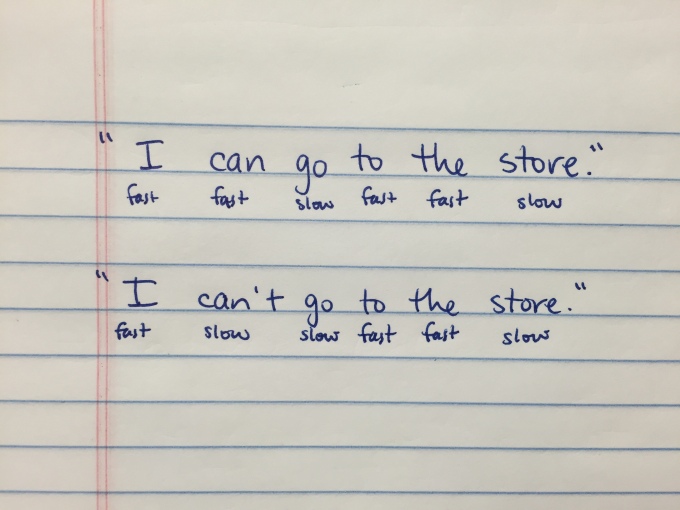
05 Jan Can You or Can’t You?
Ah, the bane of every non-native speaker’s existence! The dreaded “can” and “can’t.” In American English, you need to use contractions in order to sound natural. Unless you are trying to emphasize your point (along the lines of “I can NOT believe she just did that!”), contractions are expected in conversational speech. Even when writing (such as corresponding by email), use of contractions is the norm unless you are writing something very formal.
The top reason why non-native speakers avoid using “can’t” and use “cannot” instead (according to my many accent reduction students) is that people can’t understand them when they use “can’t.” They end up having to repeat themselves and go to the uncontracted form regardless. Today I will teach you the differences between “can” and “can’t” that will help you be understood quickly and easily the first time.
To illustrate the difference between “can” and “can’t,” we will focus on this pair of sentences:
“I can go to the store.”
“I can’t go to the store.”
First, make sure you understand the difference between content words and function words. If you don’t yet know about content words and function words, check out this blog post.
In the first sentence, the words “go” and “store” receive stress because they are content words; all other words are function words and are reduced. The rhythm will be “fast, fast, slow, fast, fast, slow” (“I can go to the store”)…. Please refer to the picture below. Think of the “fast” words as half beats and the “slow” words as whole beats. Clap out the rhythm first if it helps you.

The word “can” gets reduced to the point that you almost don’t even hear a vowel; essentially go straight from pronouncing the “c” to pronouncing the “n.” Don’t drop your tongue or your jaw in between the “c” and the “n.” If you do drop your tongue and/or jaw, the listener will hear a clear vowel. This will change the rhythm of the sentence and make “can” sound much closer to “can’t.”
In the second sentence, the word “can’t” will also receive stress along with “go” and “store.” This changes the rhythm of the sentence to “fast, slow, slow, fast, fast, slow” (“I can’t go to the store.”). In this sentence, “can’t” gets the same weight/length/stress as “go.” It doesn’t have to be overemphasized; it just needs to have the same weight as the word “go.” The word “can’t” also keeps its clear vowel sound of /ӕ/, which sounds like the vowel in “cat” and “bad” (in contrast with “can” whose vowel gets reduced to almost nothing).
The last important difference between “can” and “can’t” is the final consonant in the word “can’t.” This consonant has to be pronounced. The most common way to pronounce this is with a glottal stop, but since we won’t go into detail on that point right now, just make sure you are doing some type of “t” at the end of the word.
To recap, three things will help the person listening to you hear the difference between “can” and “can’t.”
- The first important element is the rhythm of the sentence. More specifically, you need to pronounce the word “can” quickly in relation to the stressed words in the sentence.
- Second, “can’t” keeps a clear vowel while “can” needs to be reduced to having almost no vowel at all.
- The word “can’t” has to be pronounced with a “t” at the end.
I hope this tutorial has helped you understand “can” and “can’t” a little bit better and has helped you be understood a little bit better as well!
About the Author: Jane Rupp is a speech-language pathologist and owner of Voices of the World Speech Therapy, a business specializing in foreign accent reduction.
